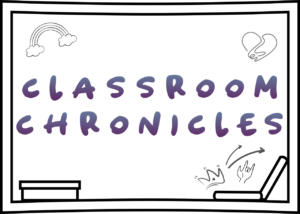Innovation in education has become a critical element in preparing students for the rapidly evolving world. As technology continues to shape our lives, educational institutions are embracing the transformative power of educational technology to enhance learning outcomes. This blog post will delve into the impact of educational technology and explore its key innovations that are revolutionizing the education landscape.
Main Point 1: Enhancing Access to Education
Education is the cornerstone of personal growth and societal progress. However, the digital divide has posed significant challenges, leaving many students without access to quality education. Educational technology has emerged as a game-changer, bridging the gap and enabling access to education for remote and underserved areas.
Online learning platforms have emerged as a beacon of hope, providing education to students in even the most remote corners of the world. These platforms break down the barriers of time and geography, offering a wealth of resources and interactive content. From video lectures to virtual classrooms, educational technology has empowered students to learn at their own pace, breaking free from the constraints of traditional classrooms.
Case studies from various parts of the world have shown promising results. For example, in rural communities where access to schools is limited, online learning has opened up new avenues for education. Students can now pursue their dreams and receive quality education that was once beyond their reach.
Main Point 2: Personalized Learning Experiences
Traditional education often employs a one-size-fits-all approach, which fails to cater to the unique learning needs of individual students. This is where personalized learning, supported by educational technology, comes into play. By tailoring educational content to the specific needs and abilities of students, personalized learning offers a more engaging and effective learning experience.
Adaptive learning platforms have gained prominence, leveraging artificial intelligence to analyze student performance and provide tailored content and assessments. This individualized approach allows students to progress at their own pace, reinforcing their strengths and addressing their weaknesses. The result is increased student engagement, improved retention, and better academic performance.
Students and educators alike have embraced personalized learning. In testimonials, students speak of increased motivation, a deeper understanding of concepts, and a newfound love for learning. Educators report that personalized learning enables them to focus on student strengths, identify knowledge gaps, and provide targeted interventions. It truly is a paradigm shift in education.
Main Point 3: Fostering Collaborative and Interactive Learning
In today’s interconnected world, the ability to collaborate and think critically is essential. Educational technology has paved the way for collaborative and interactive learning experiences that foster the development of these vital skills.
Virtual classrooms, online discussion boards, and group projects facilitated by educational technology have revolutionized the way students collaborate. Through these digital tools, students can engage in meaningful discussions, share ideas, and collaborate on projects, regardless of their physical location. The boundaries of the traditional classroom have expanded, enabling students from different cultures and backgrounds to come together and learn from one another.
The impact of collaborative and interactive learning on student engagement and critical thinking skills cannot be overstated. Students develop a sense of ownership over their learning, become active participants, and learn to think independently. Educational technology has created an environment that promotes exploration, creativity, and teamwork, mirroring the skills required in the modern workforce.
Takeaway
Innovations in education driven by educational technology have transformed the way we learn and teach. By enhancing access to education, providing personalized learning experiences, and fostering collaboration, educational technology has revolutionized the education landscape. Students now have the opportunity to learn anytime, anywhere, and at their own pace, empowering them to reach their full potential.
As educators, it is crucial to embrace and explore the potential of educational technology in our own learning environments. By leveraging these innovations, we can create engaging and inclusive educational experiences that prepare our students for success in an increasingly digital world. Let us embrace educational technology as a catalyst for change, harnessing its power to shape the future of education. Together, we can create a world where every student has access to quality education and the opportunity to thrive.

